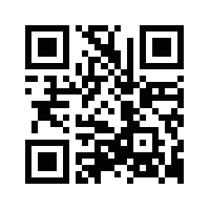
Screen shot of Sony's Qriocity
(Credit: Sony)
Sony wants to take back digital music from Apple.
The creator of the Walkman says it is ready to challenge iTunes, forge ahead into music streaming, and also put its doomed prior attempts to build iTunes-killers behind it.
Today, Sony unveiled a new cloud music service in the US that will play songs on a mix of Sony devices, such as the PlayStation3, Bravia TVs, and Blu-ray home theater systems, as well as a range of Sony's portable devices. The service is called "Music Unlimited powered by Qriocity," and hopefully the service is less clunky than the name.
For US$10 a month, Qriocity subscribers get access to music from four record labels and 6 million tracks. Music will be streamed from Sony's servers to devices so users don't have to worry about clogging hard drives and Sony won't have to worry about building any complicated software platforms (we'll get back to that). Qriocity scans a user's hard drive and then provides access to songs from their media libraries, including Apple's iTunes.
Qriocity, which Sony first touted at the IFA electronics show in September, has all the standard bells and whistles for music services today, such as a song recommendation engine. What it doesn't have is the ability to enable users to listen while unconnected from the Web. How could the maker of the Walkman, one of the great portable music devices of all time, disregard mobile like that?
Sony's answer to that is "wait and see." Qriocity is just the start. This time around, Sony's strategy to taking on iTunes is to first focus on the home. When it comes to music, that is an underserved area, Tim Schaaff, president of Sony Network entertainment told CNET.
In addition to relying on a streaming service, a feature that Apple hasn't offered yet but is expected to get into, Sony has built Qriocity on the PlayStation Network, an established digital marketplace.
"The PlayStation Network has been in the marketplace since 2006," Schaaff said," and has been growing customers for four years. There are 70 million accounts worldwide... It is has gaming, music, movies and all kinds of e-commerce. It is a stable business, and rather than starting from scratch, we decided to leverage that."
Is iTunes vulnerable?
That's a much different direction than the one Sony chose for the doomed music service, Connect. In that case, Sony tried to go toe-to-toe with Apple by creating an iTunes-like media hub, and Connect became one of digital music's all-time great Titanic stories (Read John Borland's superb narrative for CNET about what went wrong with Connect). The effort was marked by internal bickering and turf battles, the kind of dysfunction between Sony's content, hardware and software divisions that the company has been noted for in the Internet age.
Connect was stillborn on release, brought down by software glitches.
Sony tried to save face by keeping the service around a couple more years, before finally shutting it down.
How will Sony fare better this time against iTunes? Apple's music service now has an almost decade-long record of thumping challengers, including MTV, Virgin, Microsoft, Yahoo, AOL, MySpace.
For starters, Qriocity is a service closely linked to Sony's hardware, and the company has 350 million Internet-connected devices out in the wild now, Schaaff said. That means the company can enlist a legion of merchants, who sell Sony products, to help Qriocity "tell its story," he said.
Another important factor is Sony's timing, which, Schaaff argues, is spot on. iTunes has never appeared more vulnerable than now, said Schaaff, who once ran Apple's QuickTime division.
The iTunes software has become an almost unbearable drain on computer power. More importantly, the public seems to have lost interest in buying downloads. Schaaff also thinks Sony is a different company than it was in 2005 when the Connect program was begun.
"I think the conditions here today are extremely different," said Schaaff who wasn't at Sony during the Connect debacle. "We all have the same goal and we have the full support of [Sony CEO Howard Stringer], who has given us the resources we need."
"Maybe," Schaaff added, "Connect taught us some important lessons."





































